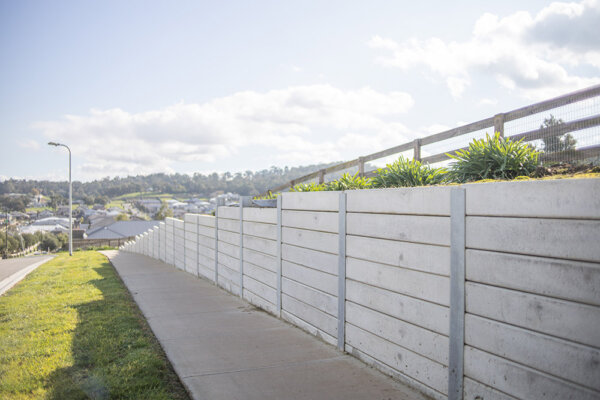Concrete sleeper retaining walls have become a popular choice for landscaping projects, offering both functionality and aesthetics. These sturdy structures provide effective support to prevent soil erosion and create level spaces for gardens, pathways, or terraces. In this blog, we will explore the steps involved in building a concrete sleeper retaining wall, as well as key considerations to ensure a successful and long-lasting installation.
What are Concrete Sleepers?
Concrete sleepers are precast concrete blocks designed to retain soil and create durable, long-lasting walls. They are known for their strength, versatility, and aesthetic appeal. Concrete sleepers come in various sizes, colours, and textures, allowing you to choose a style that complements your landscape design.
Steps to Build a Concrete Sleeper Retaining Wall
Building a concrete sleeper retaining wall requires careful planning, preparation, and execution. Here are the key steps involved:
1. Design and Planning
Begin by determining the location, height, and length of the wall. Consider the purpose of the wall and any specific design requirements. Sketch a layout and calculate the number of concrete sleepers and supporting components needed.
2. Excavation and Foundation
Prepare the site by excavating the area where the wall will be constructed. Dig a trench that provides a stable foundation for the sleepers. Ensure the trench is wide and deep enough to accommodate the sleepers and suitable drainage materials.
3. Installation of Sleepers
Place the first concrete sleeper in the trench, ensuring it is level and properly aligned. Secure the sleeper in place using steel posts or brackets. Repeat this process for each successive sleeper, ensuring consistent spacing and alignment. Use a spirit level to check the vertical and horizontal alignment of each sleeper.
4. Backfilling and Compaction
Fill the space behind the sleepers with a free-draining backfill material, such as gravel or crushed rock. Compact the backfill in thin layers using a compactor or hand tamper to ensure stability and prevent future settling.
Drainage Considerations
Proper drainage is crucial for the longevity of your retaining wall. Install perforated drainage pipes at the base of the wall to facilitate the proper flow of water. Additionally, consider incorporating weep holes or vents in the wall to release excess moisture and prevent hydrostatic pressure buildup.
Key Considerations for Building a Concrete Sleeper Retaining Wall
While constructing a concrete sleeper retaining wall, several important factors should be considered:
Free-Draining Backfill
Ensure that the backfill material used behind the wall allows water to drain freely. This helps prevent water accumulation, which can exert excessive pressure on the wall.
Subsurface Water Drainage
Take measures to ensure all subsurface water is drained away from the wall. Consider installing appropriate drainage systems, such as French drains, to redirect water away from the wall’s base.
Council Approval and Engineering Advice
If your retaining wall will be over one meter in height, check local regulations to determine if council approval is required. Additionally, consult with a qualified engineer to ensure your wall meets all safety and structural requirements.
Conclusion
Building a concrete sleeper retaining wall can be a rewarding and practical addition to your landscape. By following the steps outlined in this guide and considering the key factors discussed, you can create a durable, aesthetically pleasing, and structurally sound retaining wall. Remember to choose high-quality materials, such as concrete sleepers made with 50MPA concrete, that comply with relevant Australian Standards. With proper planning and execution, your concrete sleeper retaining wall will provide years of reliable service while enhancing the beauty and functionality of your outdoor space.


